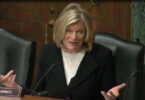Multiple banking and finance industry bodies have responded to the U.S. Federal Reserve consultation on a potential central bank digital currency (CBDC) or digital dollar. Looking at three responses from the American Bankers Association (ABA), Bank Policy Institute (BPI), and the Institute of International Finance (IIF), none of them were particularly supportive, with the IIF being the least resistant.
All three had common themes, which included concerns that a CBDC will reduce deposits within the banking system and unclear compensation for intermediaries with a two-tier retail CBDC.
IIF concerned re costs of CBDC intermediation
The IIF asked to see a quantitive and qualitative assessment of the impact of a variety of CBDC designs. The most discussed format for issuing a CBDC is for the central bank to use intermediaries such as banks that would deal with customers. A particular concern for the IIF is that a CBDC might impose costly burdens on an intermediary, such as for anti-money laundering, with minimal or no payoff, given that CBDCs are intended to have low consumer costs, like cash.
“Without commensurate reward (it) may not attract any intermediaries other than business models that depend on extracting maximum economic value from user data (in other words, BigTech providers),” said the IIF.
The IIF noted that the international dimension of a CBDC was a complex one. It is unconvinced that a CBDC is the simplest solution for cutting cross border payment costs. However, it wondered about the absence of a U.S. CBDC if major economies like Europe have one. It also noted that digital money seemed to be driving dollarization and might mean even more invoices are in dollars, even in the absence of a CBDC.
Comparing a retail and wholesale CBDC, the IIF seemed more interested in exploring a wholesale DLT-based initiative for interbank transactions.
ABA can’t see justification for a digital dollar CBDC
The ABA was the most forceful and targeted in its opposition to a CBDC, pointing to the recent history of most money creation coming from the private sector. It’s concerned about the impact on bank deposits, noting that deposit accounts currently represent 71% of bank funding. Even if CBDC accounts were capped at $5,000 per user, the ABA estimates that will reduce deposits in the banking system by $720 billion.
It questioned the dual motivations of a possible CBDC for financial inclusion and protecting the U.S. dollar’s international role. Rather than needing an official digital currency, the ABA highlighted that the U.S. dollar’s global reserve currency status is dependent on the U.S. economy, its financial markets, and trust in its institutions and rule of law. The ABA suggests that bank-issued stablecoins and tokenized deposits would be a better alternative.
BPI blames regulation for cross border payment costs
The BPI made many similar points to the other organizations, with two differences worth highlighting. On the topic of a cross border CBDC, it observed, “Inefficiencies in the current cross-border system are to some extent attributable to regulation for AML/CFT purposes, which a CBDC would not reduce.”
It also spent time exploring stablecoins. If a private stablecoin is backed by Treasuries, this was perceived as a threat. Rather than being concerned about a run on such stablecoins, the BPI is worried that bank depositors would transfer money into these stablecoins as a safe haven during a stressful economic period. Instead, it prefers to see stablecoins backed by commercial bank deposits that are used for fractional reserve banking, maintaining banks’ intermediation role.
While, on the whole, all three organizations were more or less in alignment, the responses highlight the policy minefield ahead for the introduction of a digital dollar CBDC.







